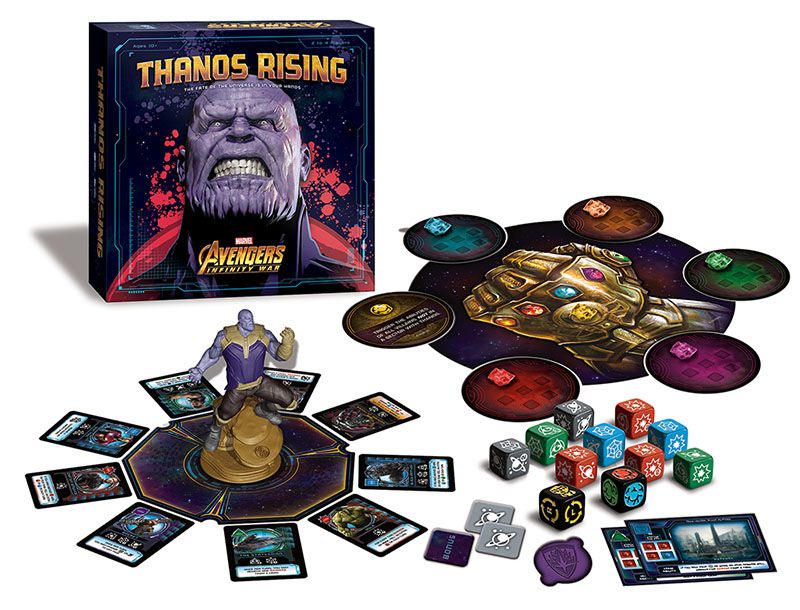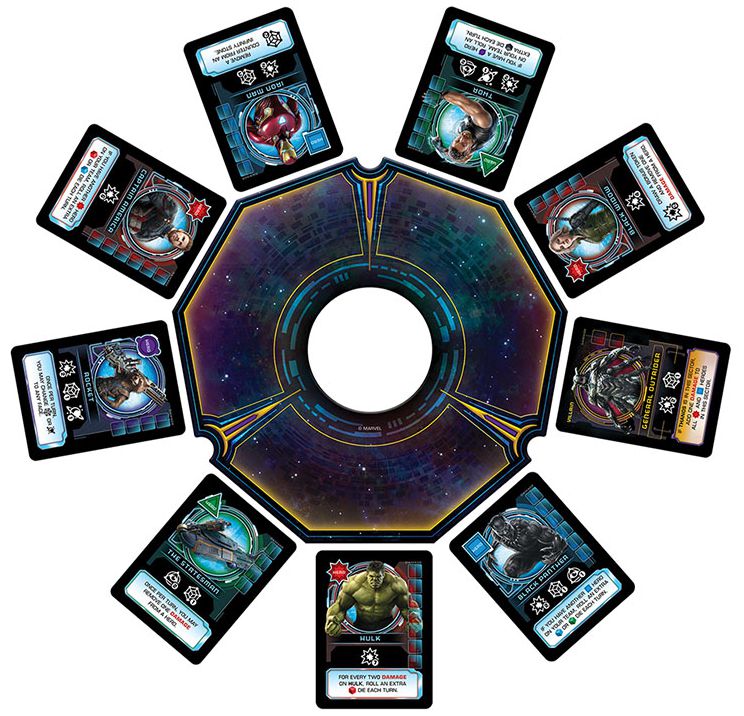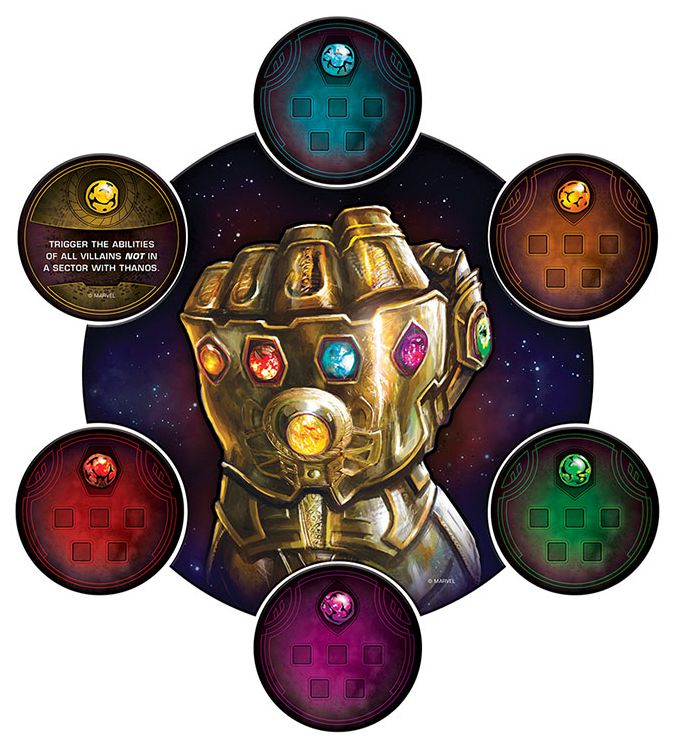Thanos Rising captures the crossover fun of Infinity War
It's like Yahtzee, but with The Avengers.

There’s a moment in the first Avengers: Infinity War trailer when Thanos steps out of a portal and looks around. It’s as if he’s saying “This may be an Avengers movie, but this is all about me.” So it is with Thanos Rising: Avengers Infinity War from USAopoly. A painted figure of Thanos towers over the table, aiming his gaze at the Infinity Stones and the heroes of Marvel’s Cinematic Universe. Those characters we’ve grown to love over 10 years and 19 movies will face down Thanos and hope to stop him from collecting the Infinity Stones. That is your goal in Thanos Rising: Stop the purple guy from collecting stones and try not to lose too many heroes along the way. Like the movies themselves, it’s broadly appealing and ideal for a casual afternoon or evening.
The core mechanism will be familiar to anyone who has played Yahtzee or the fantastic King of Tokyo. You’ve got a pool of dice to roll, four different colors with four different symbols, and you’re hoping to match symbols on the various asset cards that flip their way onto the table. Most of those assets are heroes from the MCU or items like The Guardians of the Galaxy’s ship. Once recruited, these heroes team-up to add additional dice to your pool or string together roll mitigating combos. Leveraging Dr. Strange’s green die to trigger Mantis’ heals while Nebula takes damage, directly hindering Thanos’ quest for the Mind Stone, evokes the high octane third act of most Marvel movies. It also firmly punches in the crossover theme of this cooperative game.
Unfortunately, it’s not as easy as angering Dr. Banner and going to battle. Each player begins in a different MCU location with an appropriate hero. Starting heroes have limited dice pools with a slight edge in one of the four die colors. Start in Wakanda as Black Panther, for example, and your pool is three red dice and one blue—leveraging Vibranium to gain a slight edge in recruiting assets or fighting villains with the tech symbol. On your turn you’ll choose a sector, roll your dice, and assign one or more dice to a Hero or Villain you want to pursue. Remaining dice can be re-rolled and assigned with the goal of matching all the symbols on one of the cards in your sector. If it’s a hero they join your team, offering those abilities that make later turns evoke the movies. If it’s a villain you’ll inflict damage and draw a powerful bonus tile. Deal enough damage to a villain and you can add them to your display of kills. Take out seven villains and you win the game.

It’s here that I wish player interaction involved more than sharing those bonus tiles. They offer strong benefits, can be played on a friend’s turn, and we initially undervalued them. They prevent those slow starts that lead to a bad day for the Avengers by adding dice or their symbols directly to the pool. It’s satisfying to provide the exact symbol a teammate needs, but not as satisfying as it’d be to send Hawkeye over to provide backup for Gamora. It’s shame that the team-up spirit of The Avengers is limited to an individual’s team and is not extended to the players themselves. Sending my Black Panther to help your Captain America would also mitigate early turns where the dice don’t cooperate and a turn ends with nothing.
Like most good co-op games, Thanos Rising is going to knock you back during your first few plays. Thanos himself rarely comes at the players directly, preferring to work through his minions while he seeks the Infinity Stones. As Thanos focuses his machinations on a particular stone, players will add cubes to that stone’s track. These tracks build a mounting tension. Once filled, Thanos adds a large plastic jewel to his Infinity Gauntlet and flips the cardboard stone token over to the back side. Now a roll of that color causes cascading negative effects like healing villains or advancing the tracks of other stones as he uses each stone’s unique power.

Thanos is too strong to attack directly; the only way to stop this hulking brute is to defeat his villainous allies one by one. There are three sectors on the board containing allies and villains. To recruit or attack you’ll have to send your team to one of those sectors. This puts them in immediate danger. In addition to rolling the Infinity Stone die, a second die determines where Thanos directs his energy. This can be brutally punishing as all heroes in the sector—recruited or otherwise—take damage from Thanos and his henchmen in turn. We lost more than a couple games when we sent a team into battle against the wrong villains and watched the damage snowball out of control.
In each game I found myself having to put my team in danger. Even when a sector contains no villains, spending time building your own team puts other heroes or the game itself in jeopardy. Building a strong team is tempting, as it makes it possible to attack multiple villains or recruit multiple heroes at once but that has to be balanced against fighting villains along the way. The stakes are high. Take too much time recruiting heroes and Thanos will collect all the gems and wipe out our reality, or his villains will kill too many heroes and the Avengers Initiative will end in failure. Thanos Rising is a game that shows how far tie-in games have come. It brings together all the movies we’ve grown to love and brought us together to pump our fists over critical die rolls.
The biggest gaming news, reviews and hardware deals
Keep up to date with the most important stories and the best deals, as picked by the PC Gamer team.

